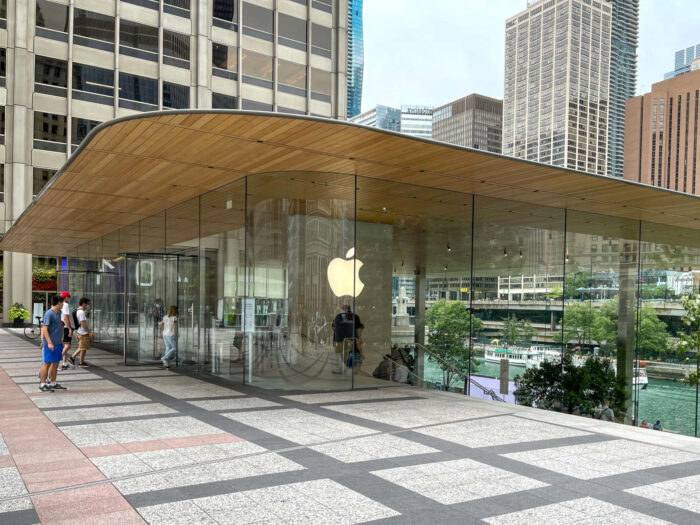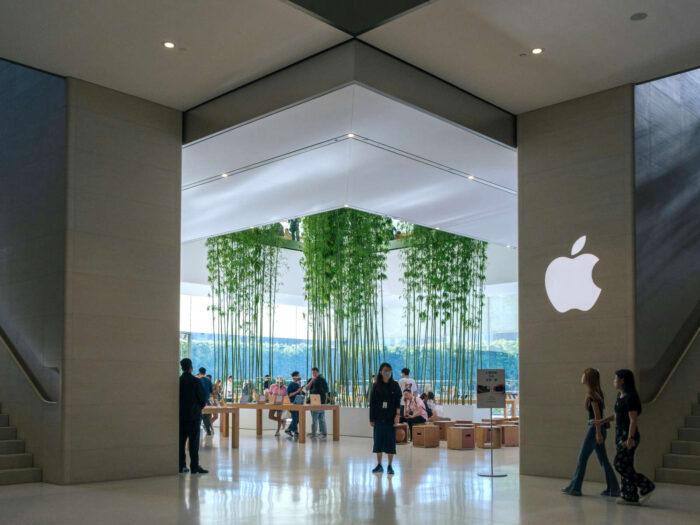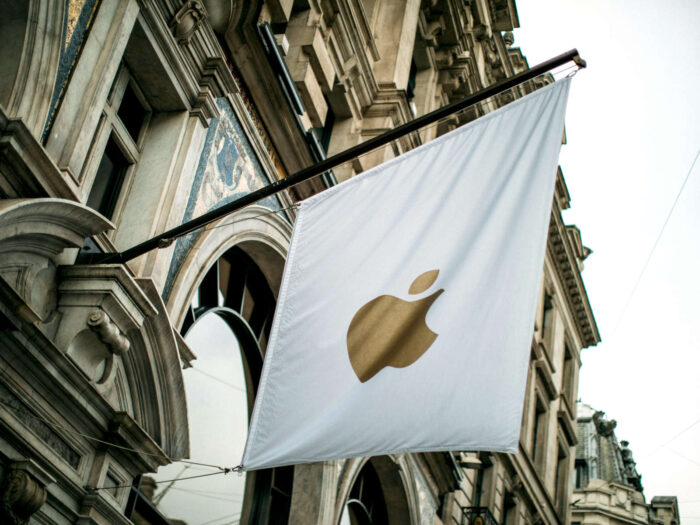
This PESTEL/PESTLE analysis of Apple Inc. identifies external factors in the industry environment. The PESTEL analysis framework evaluates the political, economic, social, technological, environmental/ecological, and legal (PESTEL) factors, which reflect strategic opportunities or threats affecting the business.
These opportunities and threats impact Apple and its competitors, such as Google (Alphabet), Microsoft, Amazon, Samsung, Dell, HP, Sony, Lenovo, Huawei, and LG, as well as IBM’s artificial intelligence, and the video streaming services of Disney, Netflix, and Facebook (Meta).
Business success relates to how Apple and its competitors strategically respond to the external factors discussed in this PESTEL analysis of the IT, consumer electronics, and online service business.
The external factors in Apple’s remote or macro-environment indicate the value of flexible long-term strategic planning in managing business opportunities and threats. Flexible long-term strategies can effectively adjust to new trends in the industry.
This PESTLE analysis is relevant to strategic formulation for Apple’s generic strategy for competitive advantage and intensive strategies for growth, which are examples of strategic congruence for countering external pressures on the information technology and online services business.
Political Factors Affecting Apple’s Business
The political factors in Apple’s macro-environment present considerable business opportunities. This aspect of the PESTEL analysis indicates the influence of governments and related organizations on businesses. In Apple’s case, the following are some of the major political factors:
- Changing free-trade policies (opportunity/threat)
- Relatively stable politics in developed countries (opportunity)
- Trade disputes, especially between the U.S. and China (threat)
Free-trade policies change over time. This external strategic factor can increase the opportunities for Apple to distribute more of its products around the world. However, this political factor can also create barriers against Apple in some markets.
This PESTLE analysis also identifies the relative stability of the political landscape of developed countries as an opportunity for Apple to grow, considering the minimized or limited political problems that affect business operations in these countries.
Despite the political trends that present opportunities, the external factor of trade disputes, especially between the United States and China, creates a threat to Apple’s potential growth and the global sales revenues of its products, such as consumer electronics.
For example, growing China-U.S. tensions can lead to higher tariffs on electronic components or finished products, as well as new import and export barriers relevant to Apple and its target markets for consumer electronics.
This part of the PESTEL analysis of Apple indicates potential performance improvement by taking advantage of political opportunities in the company’s remote environment, although caution is needed to ensure business stability despite trade disputes.
Economic Factors
Many of the external factors in Apple’s remote environment create economic opportunities. This aspect of the PESTLE analysis indicates market and industry conditions that impact firms. In this external analysis case of Apple Inc., the following economic factors are significant:
- Stable economies of developed countries (opportunity)
- Rapid growth of developing countries (opportunity)
- Unstable disposable incomes among target customers (threat)
The economic stability of most developed countries creates opportunities for Apple’s expansion. However, the rapid growth of developing countries is a more significant economic factor in this PESTEL analysis case, in terms of strong support for rapidly growing the technology business.
For example, the high economic growth rates of some Asian countries provide opportunities for Apple to increase its revenues and grow its consumer electronics and digital services business through more sales in those markets.
On the other hand, unstable disposable incomes create unpredictability in selling Apple’s premium-priced technology products. For example, socio-economic issues affecting some industries and markets can lead to unstable disposable income levels. Customers experiencing such instability may choose to delay their purchase of iPhones, MacBooks, and other Apple products, or choose to buy competitors’ products instead.

In exploiting economic opportunities, it is essential to consider international competition, as described in the Five Forces analysis of Apple Inc. Competitive forces and the economic factors in this PESTEL analysis indicate growth potential in markets for consumer electronics and online services.
However, Apple needs to overcome challenges linked to competitors, especially Google, Samsung, and other large multinational firms. These competitors aggressively innovate and market their products.
Based on this economic aspect of the PESTLE analysis, speed and effectiveness are critical in Apple’s growth and expansion efforts, although caution is needed regarding unstable disposable income levels in some markets.
Social Factors in Apple’s Industry Environment
Apple’s business is subject to the effects of social trends, including cultural shifts, demographic changes, and other variables. This aspect of the PESTLE/PESTEL analysis points to the social factors that influence the behaviors and expectations of customers and other stakeholders. In Apple’s case, the following social trends are significant in the macro-environment:
- Continuing rise of mobile access (opportunity)
- Increasing dependence on digital systems (opportunity)
- Anti-Apple sentiments (threat)
The continuing rise of mobile access around the world is an opportunity to grow Apple’s revenues. This external factor relates to the increasing demand for mobile devices, like smartphones and tablets, as well as the increasing demand for mobile digital services.
This PESTLE analysis also points to people’s increasing dependence on digital systems, which is another trend that creates opportunities for Apple to sell more of its products. The company can also develop new products or applications of its existing products to address unmet needs in the market for digital services.
However, the company faces the social threat of opposition to its business operations. Anti-Apple sentiments question business practices, such as the company’s lawsuits against third-party providers of repair services for iPhones, iPads, MacBooks, and other products. In this PESTEL analysis context, such sentiments can reduce brand value and consumer confidence in Apple goods and services.
These social/sociocultural factors emphasize the importance of Apple’s corporate social responsibility (CSR) and ESG strategy for sustainability and stakeholder management. Such a strategy helps satisfy stakeholders, including customers and governments, and address social concerns affecting the business.
Also, Apple’s organizational culture (work culture) is relevant to the social factors in this PESTEL analysis by influencing the quality of service provided to customers and shaping public relations.
Growth opportunities and threats are identified in this part of the PESTEL analysis of Apple Inc. These strategic concerns require improvements to the company’s policies, practices, and approaches in technological innovation, service provision, and marketing. Apple’s marketing mix (4Ps) includes strategies and tactics that relate to the social factors in this PESTLE analysis.
Technological Factors
The external factors in Apple’s macro-environment provide technological opportunities for the enterprise. In this aspect of the PESTLE analysis framework, current technologies and technological trends are evaluated based on their effect on businesses. In Apple’s external analysis case, the following technological factors are significant:
- Growing demand for cloud computing (opportunity)
- Increasing technological integration in businesses (opportunity)
- Growing mobile market (opportunity)
- Growing technological capabilities of other firms (threat)
This PESTLE analysis of Apple Inc. identifies growing demand for cloud-based services as an opportunity to grow the business. The company now offers cloud services, although to a limited extent with iCloud products.
In exploiting this opportunity, together with support from Apple’s organizational structure (business structure), developing an expanded cloud infrastructure can maximize business profitability in offering cloud-based services.
Also, the external strategic factor of increasing technological integration presents the opportunity to enhance Apple’s services and grow the business by offering its technological goods and services to more customers, including business organizations.
Furthermore, this PESTEL analysis includes the continuing growth of the mobile market as an opportunity for Apple Inc. to gain higher revenues through consumer electronics and the App Store and related digital content distribution platforms for iOS and iPadOS.
However, the technological advancement of other firms threatens the company, as more new players can enter the market. Thus, to ensure the achievement of the goals of Apple’s mission and vision, it is beneficial to reinforce business capabilities for exploiting technological opportunities and for protecting the business against the competitive threats relevant to this part of the PESTLE analysis.

Ecological/Environmental Factors in Apple’s Business Environment
The ecological factors in Apple’s remote environment provide opportunities for business improvement. This aspect of the PESTLE/PESTEL analysis model highlights ecological trends and their impacts on business. In Apple’s case, the following ecological factors are important:
- Business sustainability trend (opportunity)
- Energy efficiency trend (opportunity)
The business sustainability trend is an ecological factor linked to increasing favor among businesses to adopt sustainable practices to reduce the environmental impact of business operations. In this PESTLE analysis of Apple Inc., such an ecological trend offers opportunities to strengthen the company’s corporate image through improved sustainability.
The energy efficiency trend is an external factor that promotes the adoption of newer and more efficient technologies among businesses and customers. In this regard, Apple’s technology business has opportunities to improve its operational efficiencies, while offering more attractive energy-efficient products to an increasingly environmentally aware customer population.
The political, legal, and other parts of this PESTEL analysis can influence the net benefits of endeavors for energy efficiency and, consequently, the feasibility of making improvements to existing operational efficiencies at Apple Inc.
Based on this part of the PESTEL analysis, Apple addresses the above-mentioned ecological/environmental factors in its macro-environment. Apple’s ESG and CSR programs and related strategic measures, such as supplier responsibility policies, respond to these ecological trends.
Apple’s operations management also supports business efforts to exploit sustainability and efficiency opportunities based on these trends. For example, the company’s process design and supply chain management are already geared toward long-term sustainability goals for IT, consumer electronics, and digital services.
Legal Factors
The external factors in Apple’s remote environment include legal and regulatory threats to the business. This aspect of the PESTLE analysis framework indicates the impact of laws or regulations on businesses. In Apple’s case, the following are significant legal factors:
- Increasing privacy regulations (opportunity & threat)
- Legal challenges against Apple’s policies and practices, especially after-sales service and repair (threat)
Governmental pressure for privacy in the digital age leads to increasing privacy regulations on businesses, like Apple Inc. In this PESTEL analysis case, such a legal factor is a business threat that imposes costly regulatory compliance requirements and more limits on the IT and consumer electronics company.
However, this PESTLE analysis identifies the same external factor as a trend that presents opportunities for Apple to boost its business through enhanced privacy measures, such as new policies or new technologies.
Apple faces legal challenges related to its practices and policies on after-sales service and other areas of the business. For example, in Australia, the European Union, and the United States, the company faces criticism and legal battles regarding its policies on third-party repair services.
Based on this part of the PESTEL analysis, Apple must emphasize privacy protection and regulatory compliance in all its products and consider adjusting its policies and practices to address current legal pressures on its business.
Insights: Apple PESTEL/PESTLE Analysis
This PESTLE analysis shows that many external factors in Apple’s macro-environment provide business opportunities. Given its current industry position, the company can exploit these opportunities to expand its reach in the global information technology and online services market. However, Apple may need additional strategic measures to address the threats, especially in the legal dimension.
Based on this PESTLE analysis, it is expected that Apple will remain in its strong industry position. Nonetheless, the dynamics of the market and the presence of aggressive competitors can drastically change the company’s strategic position. In this context, it is of critical importance to further improve the business strengths identified in the SWOT analysis of Apple Inc. to mitigate the effects of competition.
Recommendations for Apple Inc.
The external factors in this PESTLE analysis of Apple come with opportunities for business growth, as well as threats that can decrease business performance. Based on the political, economic, social, technological, environmental/ecological, and legal factors discussed in this PESTLE analysis, the following are recommendations for Apple Inc.:
Recommendation 1. Prioritize sales and marketing in high-growth markets. This recommendation is based on the economic aspect of this PESTEL analysis of Apple. Increasing business efforts to target more customers in high-growth developing countries can increase the company’s growth rate, improve the stability of its market share, and strengthen the ecosystem of Apple consumer electronics and online services.
Recommendation 2. Grow Apple’s cloud computing services. This recommendation is based on the technological opportunities linked to cloud computing. As noted in this PESTEL analysis, the company has a limited set of cloud-based services. Considering the growing demand for cloud computing, Apple can use its technological capabilities for such business opportunities.
References
- Apple Inc. – Environment.
- Apple Inc. Form 10-K.
- Apple Inc. Supply Chain Innovation.
- Apple Trade Compliance.
- Dortz, M., & Wagner, J. (2025). Raising rivals’ costs and right to repair laws: Separating the sheep from the goats? Journal of Regulatory Economics, 1-16.
- Kotabe, M. (2024). Lessons from the consumer electronics industry. In Concise Introduction to Global Supply Chain Management (pp. 65-91). Edward Elgar Publishing.
- Nzeako, G., Akinsanya, M. O., Popoola, O. A., Chukwurah, E. G., & Okeke, C. D. (2024). The role of AI-Driven predictive analytics in optimizing IT industry supply chains. International Journal of Management & Entrepreneurship Research, 6(5), 1489-1497.
- U.S. Department of Commerce – International Trade Administration – Software and Information Technology Industry.